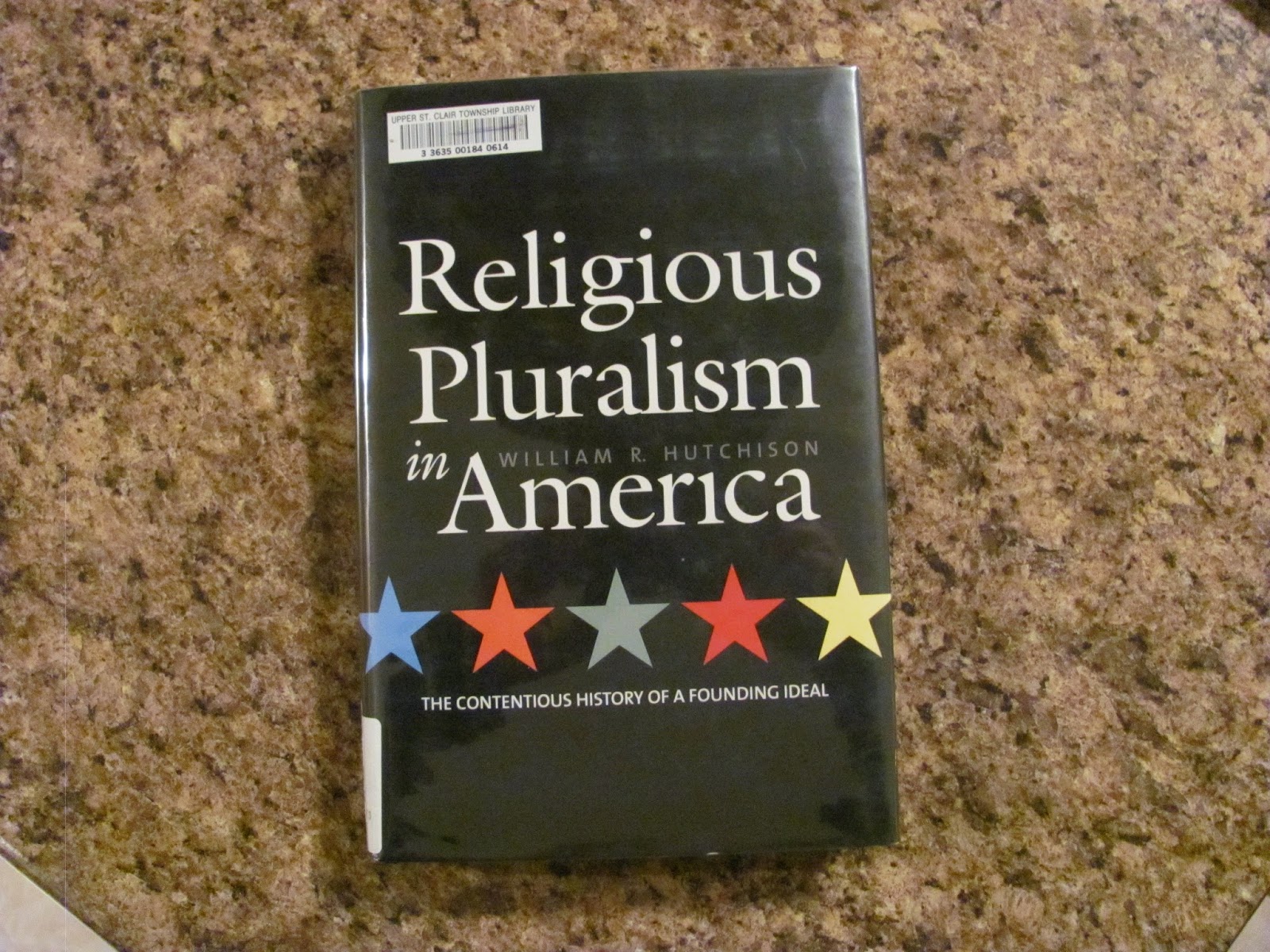During the last several years of his long teaching career at Harvard, William R. Hutchison developed a series of lectures on the legal, political, and cultural history of religion in America. In 2003, he published the series as a book entitled Religious Pluralism in America: The Contentious History of a Founding Ideal.
Throughout, Hutchison focuses on the presence of religious subcultures in the United States, and emphasizes that acknowledging diversity is something different from embracing pluralism.
Hutchison identifies three stages of what he calls religious pluralism in America: toleration, inclusion, and participation. He defines "toleration" as the mere legal and social tolerance of religiously deviant persons and groups. Even before the American revolution, the British colonies were known for their religious diversity and tolerance. Throughout much of the nineteenth century, Americans who identified with the dominant culture of Anglo-Calvinist Protestantism typically assumed that newly arrived immigrants, like Irish Catholics and German Lutherans, had the right to exist. Yet these groups were denied any sort of cultural authority. Often, toleration amounted to little more than the "absence of persecution" (6). This was in exchange for the absence of any socially threatening behavior on the part of the new immigrants.
By the end of the nineteenth century, says Hutchison, a growing number of Americans were coming to see mere toleration as inadequate, both morally and practically. Their dissatisfaction led to what Hutchison calls "inclusion," an impulse that represented a step towards a stronger form of pluralism. The middle chapters of the book reveal that inclusion resulted from a three-way collaboration: it was initiated by the leadership of the reigning Protestant liberals, and was claimed by Catholics and Jews. Still, inclusion rarely granted to the newly included "an equal or proportional right to share in the exercise of cultural authority" (6).
Hutchison depicts the years following the First World War as a time of steady march towards his third stage, "participation." By that term he means a social mandate according to which all sorts of individuals and groups (including groups defined by ethnicity, race, or gender as well as religion) "share responsibility for the forming and implementing of society's agenda" (7). The author is quick to acknowledge that during the early twentieth century there were still signs of intolerance, like anti-immigrant legislation and the Ku Klux Klan. At the same time, there also emerged significant signs of greater participation. For example, religious leaders established the National Council of Christians and Jews in 1928. National Brotherhood Week was first observed in 1934.
At least three public-policy landmarks of the 1950s and 60s hastened the advance of inclusion. First, although it was in some ways xenophobic, the McCurran-Walter Act of 1952 lifted the ban on immigration from Asia and the Pacific. Second, and even more important, was the Brown v. Board of Education decision handed down in 1954. Finally, the Immigration and Nationality Act of 1965 "abolished the quota system that had kept immigration from Asia to a minimum" (224).
Hutchison ends on a note of hope. The words of the Founders, he intimates, rather than their inconsistent examples, will finally win the day in America. That is still to be seen, and it is still unclear what that sort of victory, if achieved, will look like.
Subscribe to:
Post Comments (Atom)


No comments:
Post a Comment